Kingdom Plantae Rank Species | Genus Astrantia Higher classification Astrantia | |
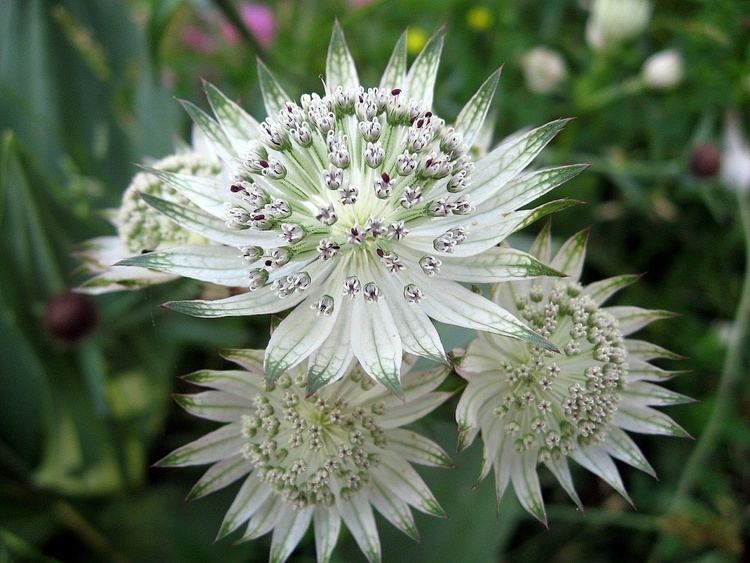 | ||
Similar Astrantia, Sanguisorba, Lady's mantles, Aquilegia vulgaris, Bellflowers | ||
Astrantia major masterwort
Astrantia major, common name great masterwort, is a species of flowering plant in the family Apiaceae, native to central and eastern Europe. Growing to 90 cm (35 in) tall by 45 cm (18 in) broad, it is an herbaceous perennial, much used in gardens.
Contents
- Astrantia major masterwort
- Etymology
- Description
- Reproduction
- Distribution
- Habitat
- Subspecies
- Cultivation
- References
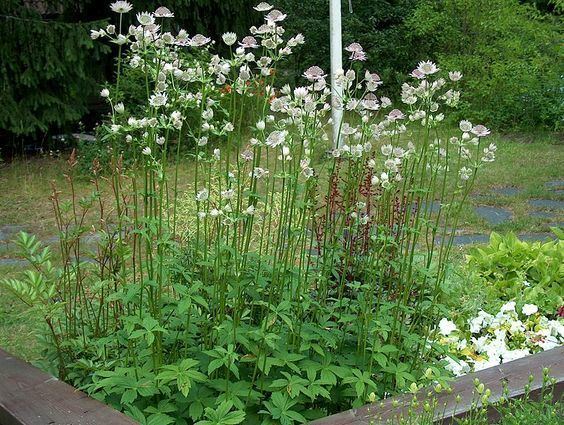
Etymology
The specific epithet major, meaning "larger", distinguishes this species from its smaller relative Astrantia minor.
Description
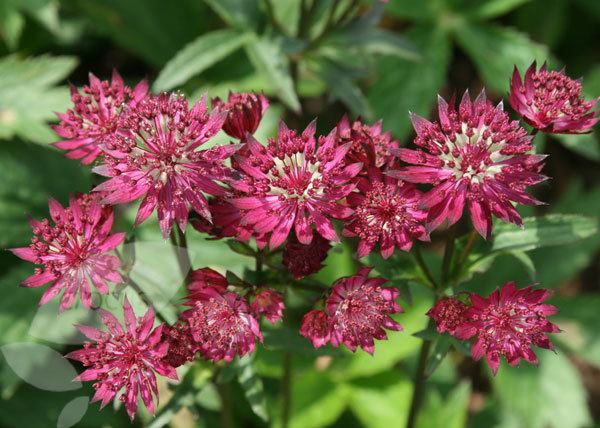
Astrantia major reaches on average 60 centimetres (24 in) of height. The stem is erect and glabrous, with little branches and few leaves. The basal leaves have a long petiole 10–20 centimetres (3.9–7.9 in), 3 to 7 lobes and toothed segments. Size: 8–15 centimetres (3.1–5.9 in). The cauline leaves are generally two, sessile, amplexicaul and lanceolate-shaped with a trilobed apex. The inflorescence is umbrella-shaped, with 2–3 centimetres (0.79–1.18 in) of diameter. The floral bracts are numerous (10 - 20), 10–18 millimetres (0.39–0.71 in) long, reddish (sometimes white) with acuminate apex. The small flowers are greenish-white with reddish shades. The central ones are hermaphrodite, while the external ones are male. The petals are five, white (or slightly reddened), while the stamens are five and much longer. Size of the flowers: about 1 mm. The flowering period extends from June through September.
Reproduction
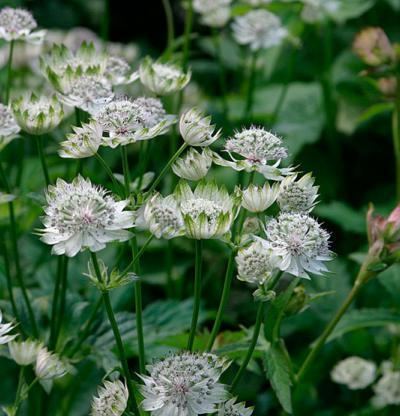
Astrantia major is an entomophilous plant, mainly pollinated by beetles, but also by other insects. This perennial plant reproduces itself also by means of buds present at the ground level.
Distribution
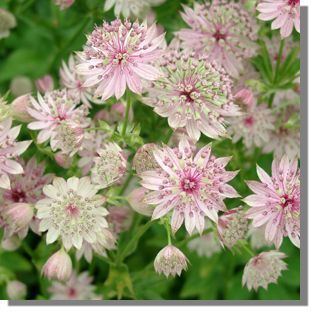
These plants native of Europe and Western Asia are widespread in southern Europe (Pyrenees, Carpathians and Balkans), but also in the Caucasus up to Anatolia. They have been introduced into the British Isles and are well established in various localities. It has been in the British Isles since the 16th Century. It has also naturalized in Shropshire near Stokesay Castle.
Habitat
They are common in mountain meadows and grasslands, in forests and clearings and close to the streams, usually on calcareous soils, at an altitude of 100–2,300 metres (330–7,550 ft) above sea level.
Subspecies
Cultivation
Many strains of Astrantia major grow well in the garden, given some shade and moisture. Their flowerheads provide summer colour in shades of red, pink and white. The following cultivars have gained the Royal Horticultural Society's Award of Garden Merit:-
Other cultivars include:-
